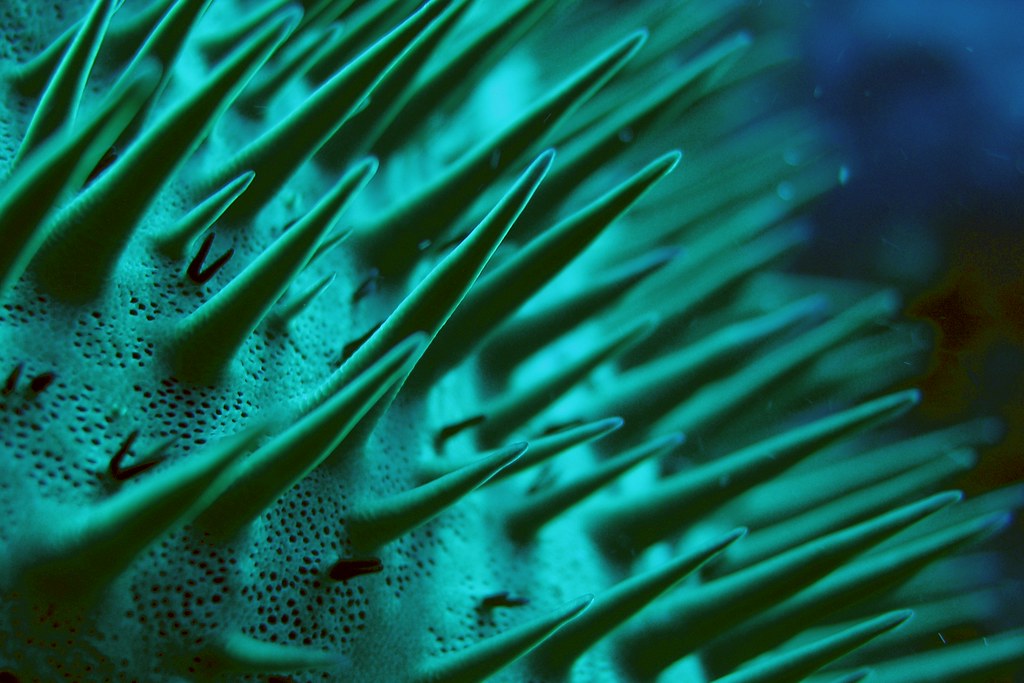Getting Started with Underwater Photography – Part 2 – Get the Right Camera
In the last post, I told you to hone your buoyancy and fining skills before even wetting your camera housing. I assume that you have followed my advice and are now on the way to becoming Ms. Buoyancy or Mr. Buoyancy, and you are ready to start taking underwater pictures.
But, hey, do you have a camera and a housing yet? Getting the right gear is a crucial step in becoming a good underwater photographer. Question number one is, how much should you spend for a proper setup? The answer depends on how much money you have, and how important underwater photography is to you. I myself, for instance, have relatively little money, but underwater photography is very very (very!) important to me. Hence I spent several thousand $s on a Canon EOS5DII with a couple of really nice lenses, in a high-end Hugyfot housing. This setup of mine, my pride and joy, my companion on dives deep and shallow, will be the topic of future posts. This is a post about getting started in underwater photography, so I will tell you what entry level gear to consider.

The crux with purchasing underwater photo gear is that for most SLR cameras, the manufacturers don’t make a housing for their camera (Olympus is an exception), and you have to buy one from a third party manufacturers. This usually increases the cost of the equipment to hefty levels. Also, there is always a risk of flooding your housing, which will destroy your camera, which is a bigger loss if it’s an SLR. Hence, even if you already own a SLR camera, you might consider getting a point & shoot if you first dive into underwater photography (ok, ok, not my best pun ever).
In my opinion, there are two nice options these days: top-end point & shoots and compact interchangeable lens digital cameras. I’ll talk about one example each; There are comparable models from other manufacturers as well.
In the old days, point & shoot cameras were hopelessly inferior cameras only good enough for snapping party pictures, definitely not sufficient for nature photography under water. Their image quality was mediocre, and they had a long (maybe 1 s) delay between pressing the shutter and taking the picture. This has changed, and the top-level point&shoots are good cameras these days which will serve you well underwater. A good example for a top-end point&shoots is the Canon G12. By top -end I mean two things: a larger, better lens, which will harvest more light, and more user controls, especially the shutter speed/aperture priority and manual modes. I deem the presence of a manual mode quite important, especially for shooting wide-angle; I will come to this when I explain the basics of camera settings for underwater photography in a future post.
Canon themselves make an affordable housing for this camera. It’s made from polycarbonate, and comes with a diffuser to spread out the light from the built-in strobe more evenly. This is a good housing which will serve you well in your first photographic efforts underwater.
The Sony NEX-5R is a recommendable compact interchangeable lens digital cameras. These cameras are in-between SLRs and point&shoots, with a dash of cell-phone. On land, you can set their functions with a touch-screen on the camera’s back, and they are light and still quite easy to use. What puts them a step above the point&shoots is that you can exchange their lenses, from wide-angle to telephoto or anything in-between. There is a special series of lenses for the Sony compact interchangeable lens digital cameras, but with an adapter it’s also possible to use SLR lenses.
A number of manufacturers make housings for this camera – the housings range from polycarbonate housings to higher quality, higher price, machined aluminum housings.
A really cheap housing is this one. However, you won’t be able to use different lenses with it. That, more than the material the housing is made from, is a limitation, but at the same time, with good visibility on a sunny day, you could get some nice shots of the underwater scenery with the 16 mm lens the housing is made for.

Aquatica and Nauticam (for the slightly different NEX5N) make aluminum housings for this camera, which you can equip with different ports for a variety of lenses. The curved domes among the ports house wide-angel lenses and add optical properties themselves. The more expensive housings also come with optional arm-systems for strobes and fiber optic cables connecting external strobes – the light coming from the camera’s strobe then triggers these. Such a setup is coming close to a SLR setup, and you will probably be happy with it for years before (if) you want to upgrade to an SLR system.
While the polycarbonate housings do the job, metal housings are sturdier and will last longer in the face of the significant wear & tear due to high pressures in salt water. You will have to figure out for yourself how much money you want to pour into your new hobby. How certain are you that you will become an enthusiastic underwater shooter? How many opportunities to dive do you have? You’ll have to ask yourself these questions to find where on the continuum from a point & shoot to a compact lens exchange camera in a nice aluminum housing you should settle.
Ok! This step in your journey to becoming an underwater photographer was a bit harsh on the bank account. I hope there is something left in it, because next week I’ll give you some advice on which strobe, a necessity for capturing quality images, to get.